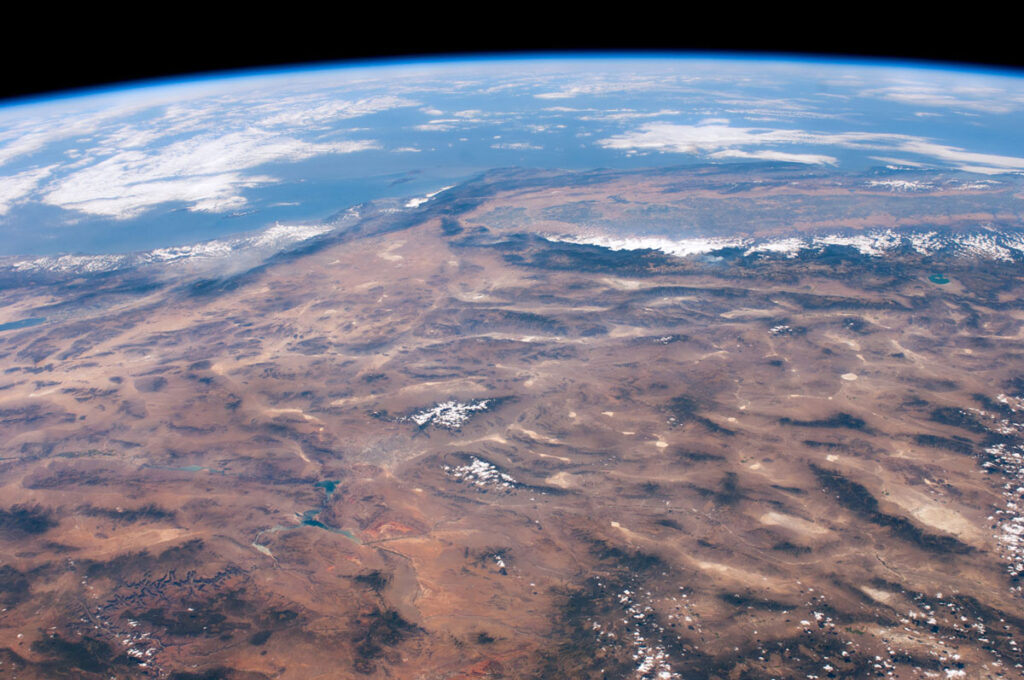“We’re still characterizing arsenic concentrations all over the U.S. The job is not complete.”
Thousands of private groundwater wells used by 49,000 people across the western Great Basin could be laced with dangerous levels of arsenic, new research suggests.
Scientists at the Desert Research Institute in Reno, Nev., combined measurements of arsenic in water samples from across the western Great Basin with geological data to create a model that can predict where groundwater is likely to be contaminated. The results allowed the researchers to map the risk of arsenic exposure across the region. Tectonic and geothermal factors such as proximity to young faults and hydrothermal areas were among the strongest predictors of dangerous levels of arsenic. The findings were published in Environmental Science and Technology.
“We’re still characterizing arsenic concentrations all over the U.S. The job is not complete,” said Joseph Ayotte, a hydrologist with the U.S. Geological Survey (USGS) who was not involved in the study.
Unregulated Wells
Long-term exposure to arsenic raises the risk of certain cancers, cardiovascular and respiratory disease, and skin problems. In the United States, arsenic concentrations should not exceed 10 micrograms per liter (10 parts per billion) in drinking water. But whereas tap water is monitored and regulated by water authorities, private wells usually aren’t. The more than 40 million people in the contiguous United States who use such wells predominantly live in rural areas and are mostly on their own when it comes to testing and treating their water.
The Western states are “hot spots” for arsenic contamination, Ayotte said, putting well users there at greater risk of exposure to the toxic metal. One previous analysis of water from wells in Nevada and northern California revealed dangerously high arsenic concentrations in just less than a quarter of the samples.
“So we started thinking,” said hydrologist Daniel Saftner of the Desert Research Institute, who was involved in the previous analysis and led the new study, “what are the reasons for this? What are the geologic explanations? And how can we better predict [high arsenic levels] in areas that we don’t necessarily have ground truth data?”
Geological Hazards
This unique geology makes for striking landscapes but also contributes to the region’s arsenic troubles.
Part of the enormous Basin and Range geological province, the Great Basin is arid, mountainous, and rippled by rows of roughly parallel mountain ranges spanned by flat basins formed as the crust in the region was pulled apart. A series of parallel normal faults separates alternating blocks of crust that move up and down relative to one another. This unique geology makes for striking landscapes but also contributes to the region’s arsenic troubles.

Combining more than a dozen sets of geological, hydrological, and well water data, the new model predicted that private wells in basins with lots of Quaternary faults—faults that have moved within the past 1.6 million years—were more likely to have unsafe arsenic levels. Faults are pathways for old, arsenic-laden water from deeper in the crust to creep up into aquifers. They are also barriers that prevent groundwater from flowing horizontally, causing arsenic to accumulate as the water evaporates.
Wells in areas with more geothermal activity also had higher risks of contamination. The Great Basin’s many faults have thinned its crust, “and because it’s thin, it has high heat flow. So there’s very high geothermal potential in the region,” said geologist Steve Bacon of the Desert Research Institute. Geothermal activity can create chemically altered, arsenic-laden water that pushes up through faults, Saftner explained.
The region’s aridity and topography also contribute to arsenic problems, the model showed. “Valleys are often surrounded by mountain ranges and surrounded by associated faults that kind of prevent groundwater from flowing out of the basin,” said Saftner. As the old water evaporates, it concentrates contaminants, including arsenic. The presence of salty playa deposits, which form in dry lake beds, was also one of the strongest predictors of arsenic problems in the new model. Arsenic accumulates in playas as the water carrying it evaporates.
Better Models and Better Health
The current standard of 10 micrograms per liter for arsenic in drinking water was put in place in 2001. But “there was still relatively little known about arsenic in groundwater at that time on a large scale,” Ayotte said. It wasn’t until 2017 that the USGS produced the first nationwide model for predicting arsenic risk.
Since then, Ayotte said, other researchers have built similar models for smaller regions. Saftner, Bacon, and their colleges built theirs specifically for the western Great Basin, which allowed them to take the region’s geological setting into account.
“When you go from a large scale to a smaller scale, you tend to learn things that you didn’t know from the single larger-scale model and vice versa,” Ayotte said. In particular, Ayotte said that the geothermal factors identified in the new model aren’t currently part of the nationwide model previously developed by the USGS. Going forward, it’ll be easier for models built for other regions and scales, including the nationwide one, to include geothermal factors, he added.
Saftner said he looks forward to applying the new model to other parts of the Basin and Range and possibly even to other regions with high geothermal activity, such as those in Bangladesh and Taiwan.
More immediately, the Desert Research Institute team is working with health researchers to understand how arsenic exposure is related to health outcomes in the region. And though there’s still work to be done making the model results easy to access online, Saftner said that he hopes the new risk maps, which are available online, will already start to help people understand their risk—and consider testing their wells.
People can check whether the groundwater where they live is at high risk of arsenic contamination and make decisions based on that information, he said. “That is really how I hope that this can ultimately be used.”
—Elise Cutts (@elisecutts), Science Writer

